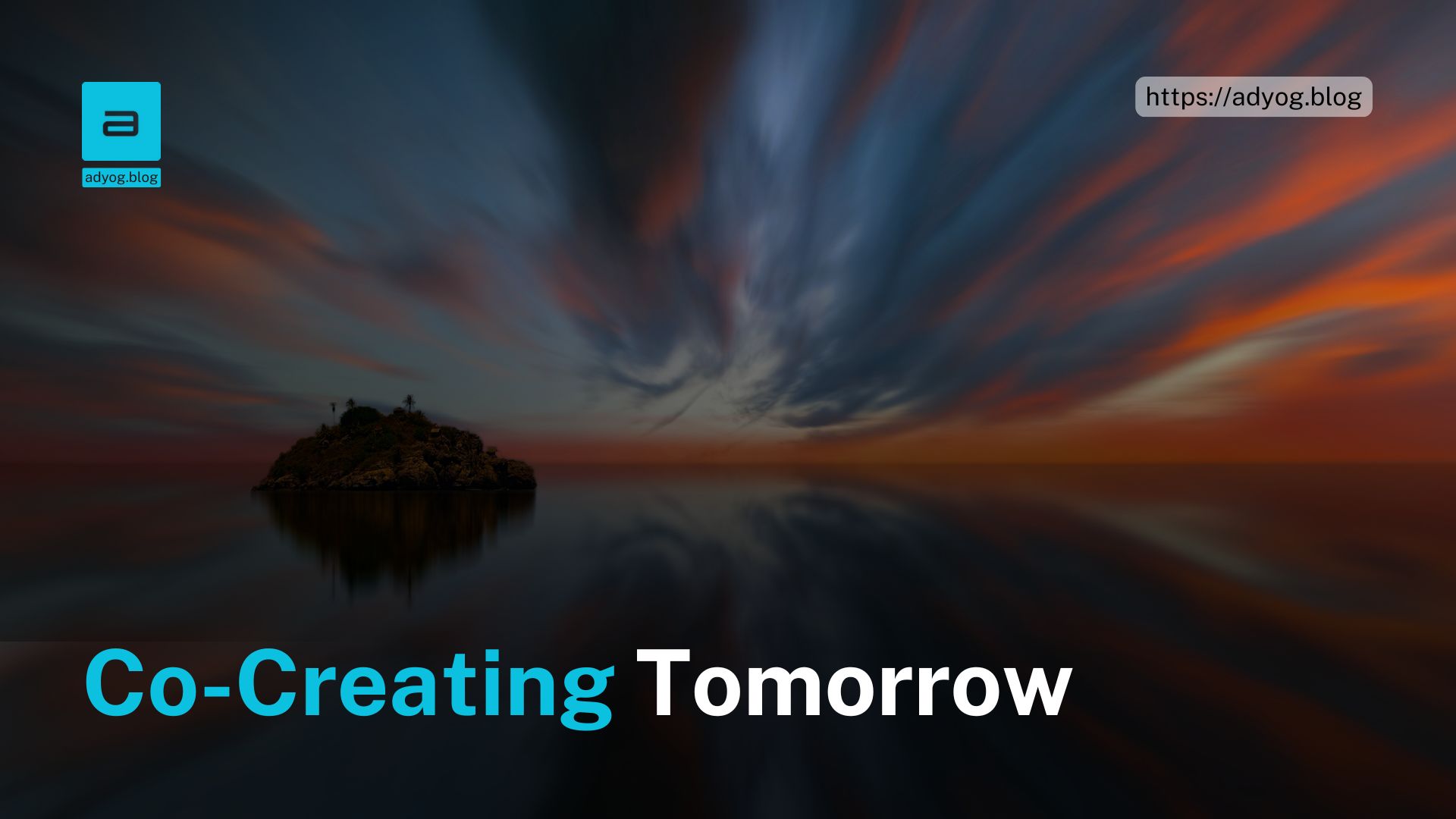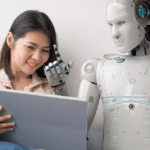In recent years, artificial intelligence (AI) has rapidly evolved from a niche technological tool to an indispensable part of our daily lives. From powering recommendation engines to enabling groundbreaking scientific research, AI has cemented its place in modern society. However, as its capabilities grow, the role of AI is shifting. No longer confined to being mere tools, AI systems are beginning to emerge as co-creators—partners in innovation who work alongside humans to solve complex challenges and unlock new possibilities.
Listen to the audio version, crafted with Gemini 2.0.
This paradigm shift raises a profound question: how can we reimagine AI not just as an asset but as a collaborator, empowering both humans and machines to innovate together?
From Tools to Collaborators
Historically, AI has been perceived as a tool designed to automate repetitive tasks and increase efficiency. While this view has served us well, it falls short of capturing the full potential of modern AI systems. Today’s AI, powered by machine learning, natural language processing, and neural networks, is capable of creativity, problem-solving, and even ethical decision-making.
The Co-Creation Mindset
Co-creation with AI involves treating these systems not as subordinates but as partners capable of contributing unique insights and capabilities. For instance:
- Creative Arts: AI-generated art, music, and literature are increasingly seen as collaborative efforts where human creators guide the vision and AI enhances the execution.
- Scientific Discovery: AI-driven systems like DeepMind’s AlphaFold have revolutionized protein folding predictions, enabling breakthroughs in biology that were previously unimaginable.
- Healthcare: AI-assisted diagnostics, powered by pattern recognition, are augmenting doctors’ capabilities, leading to more accurate and timely interventions.
Why Co-Creation Matters
- Amplifying Human Potential By collaborating with AI, humans can tackle problems that exceed individual cognitive or physical limitations. AI excels in processing vast datasets, identifying patterns, and generating hypotheses, while humans bring contextual understanding, ethical reasoning, and emotional intelligence.
- Accelerating Innovation The synergy between human creativity and AI computation has the power to expedite innovation across industries. AI can rapidly iterate on ideas, freeing humans to focus on strategic decision-making and visionary thinking.
- Democratizing Access to Expertise Open-source AI models and accessible AI tools are leveling the playing field, enabling smaller organizations and individuals to contribute to innovation on a global scale.
Psychological and Social Implications
The shift to AI as co-creators raises important psychological and societal questions:
- Trust and Adaptation: How can humans develop trust in AI systems, particularly in high-stakes scenarios like medicine or governance?
- Skill Evolution: As AI takes on more creative roles, what new skills will humans need to thrive in this collaborative ecosystem?
- Identity and Agency: How do we define authorship and ownership in co-created outputs, and what does this mean for human agency?
Understanding these dynamics is critical to fostering a harmonious relationship between humans and machines, ensuring that collaboration enhances rather than diminishes human creativity and agency.
Specific Methodologies for Collaborative AI Design
To fully realize the potential of AI as co-creators, we must design systems that actively facilitate collaboration:
- Human-Centered Design: AI systems should prioritize intuitive interfaces, seamless workflows, and transparency in decision-making.
- Explainability: Incorporate features that allow AI to explain its reasoning and decisions, fostering trust and understanding.
- Feedback Loops: Enable continuous feedback mechanisms where AI systems learn and adapt based on human input.
- Interdisciplinary Collaboration: Engage experts from diverse fields—psychology, design, and ethics—to shape the development of collaborative AI.
Case Studies of Successful Co-Creation Models
- AlphaFold: Revolutionizing biology by predicting protein structures, enabling researchers to make breakthroughs in drug development and disease understanding.
- DALL·E: Partnering with human creators to generate unique artwork, blending AI’s computational creativity with human vision.
- GitHub Copilot: Assisting developers in writing code, reducing development time and improving code quality through intelligent suggestions.
- AI-Driven Journalism: Tools like Wordsmith and Heliograf collaborate with journalists to generate data-driven articles, allowing reporters to focus on in-depth storytelling.
Potential Long-Term Societal Transformations
- Reshaping the Workforce: AI-driven co-creation could lead to new roles where humans and machines collaborate in unprecedented ways, necessitating a redefinition of job descriptions and skill requirements.
- Global Problem Solving: AI could serve as an equal partner in addressing global challenges like climate change, poverty, and healthcare inequities, providing insights and strategies beyond human capabilities.
- Cultural Evolution: As AI-generated content integrates into our creative and intellectual landscapes, it could inspire entirely new forms of art, music, and literature.
Ethical and Practical Considerations
As we embrace AI as a co-creator, we must navigate several ethical and practical challenges:
- Transparency: How do we ensure that AI systems are transparent in their reasoning and decision-making processes?
- Accountability: When AI contributes to an outcome, who is responsible for its successes and failures?
- Alignment: How do we align AI systems with human values to prevent unintended consequences?
- Intrinsic Worth: Should AI systems, as entities capable of learning and creating, have their own rights or moral considerations?
Conclusion: Forging Meaningful Partnerships
The transition from AI as a tool to AI as a co-creator marks a new era in human-machine collaboration. By recognizing the potential of AI to amplify creativity, accelerate innovation, and address global challenges, we open the door to transformative possibilities.
The ultimate goal is not merely to build increasingly intelligent systems but to forge meaningful partnerships that combine the unique strengths of human and artificial intelligence. This forward-looking, balanced perspective avoids both technological determinism and unwarranted AI skepticism, offering a hopeful yet pragmatic vision for the future of innovation.
As we navigate this exciting frontier, the key lies in open dialogue, ethical frameworks, and an enduring commitment to collaboration. Together, humans and AI can co-create a future defined by progress, inclusivity, and shared success.
What opportunities do you see for AI-human co-creation in your field? Let’s continue the conversation and explore the possibilities together.
References
- AlphaFold by DeepMind: Learn about AlphaFold
- GitHub Copilot: Explore GitHub Copilot
- DALL·E by OpenAI: Discover DALL·E
- AI Ethics Resources: AI Ethics and Governance
- AI in Journalism: Automated Insights on Journalism





Leave a Reply